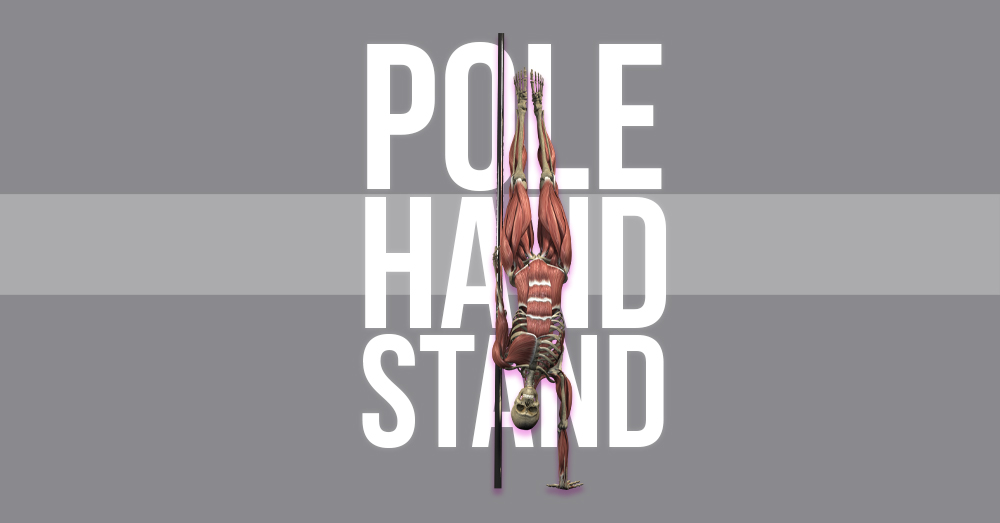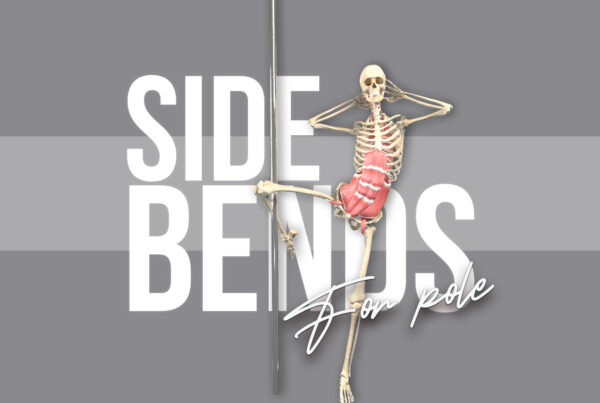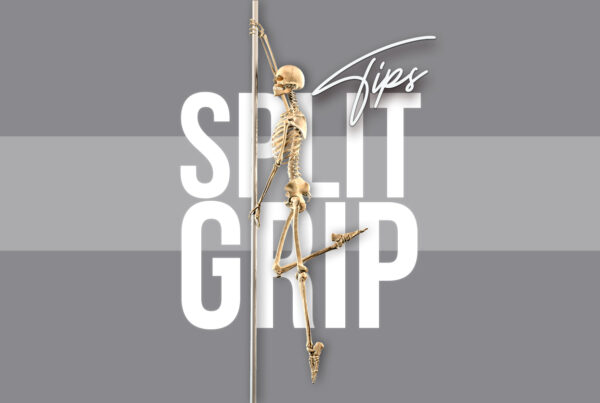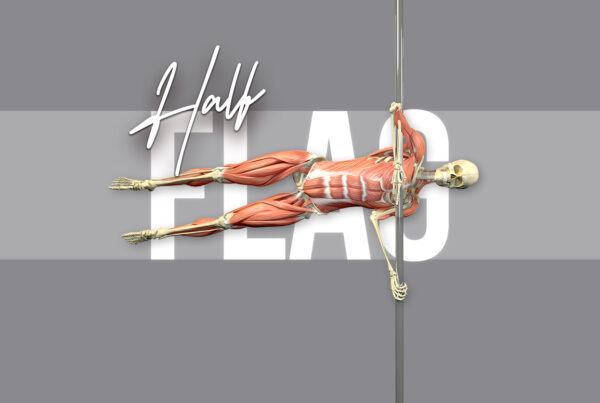If anyone can take an already challenging, boss-level gymnastic movement and sprinkle on another creative layer of ‘extra-ness’, it’s a pole dancer.
Case in point = The Pole Handstand. It’s a handstand, yes – but with a pole dancing twist: only one hand is actually doing the handstanding part! We took this advanced, usually bilateral balance and made it unilateral. You’re welcome.
Doing a one-armed handstand sounds like it would be more intense than the original ‘muggle’ variation, but while the pole handstand does have some increased complexity due to its unilateral nature, it does have one advantage over it’s freestanding bilateral brother – we can use the pole as an additional stable base from which to move. Yay stability!
In part 1 of this blog post, we’ll dive into the anatomy of the pole handstand and look at which key muscles are working to keep us living our best upside down life.
In part 2, we’ll cover some set-up tips for getting your pole handstand off on the right, erm… hand.
Then in part 3, I’ll share some of my go-to handstand deadlift progressions.
Sound good? Then let’s get at it…
Rather watch than read?
If you’d rather watch than read, I got you! You can watch a whistle-stop 90-second summary of the key points in this blog post in the pole anatomy video below.
A constant balance of opposing muscle groups
Before we look at the individual elements of the pole handstand, let me start by saying that the handstand really is a full body movement. It’s a balance which requires constant and subtle adjustments between many different and often opposing muscle groups.
For instance, while our glutes are working to prevent our legs from falling too far in front of us, our hip flexors are also working to prevent the legs moving too far behind us – the opposing muscle groups essentially work together to help stabilise in the air and balance any handstand wobbles that try to throw us off centre.
Even small movements of the ankles and feet, for example, can be recruited to help find and maintain a balance point, even though we don’t consider these ‘key’ elements of the handstand.
My point is, there aren’t many muscles we don’t recruit when handstanding – but let’s take a closer look at some of the most important ones!
Pole handstand anatomy: The bottom arm
In the pole handstand, the bottom arm is pretty much doing its ‘normal’ handstanding business.
The wrist is extended but the extensors are supporting the wrist and finger flexors which actively press into the floor to balance the position.
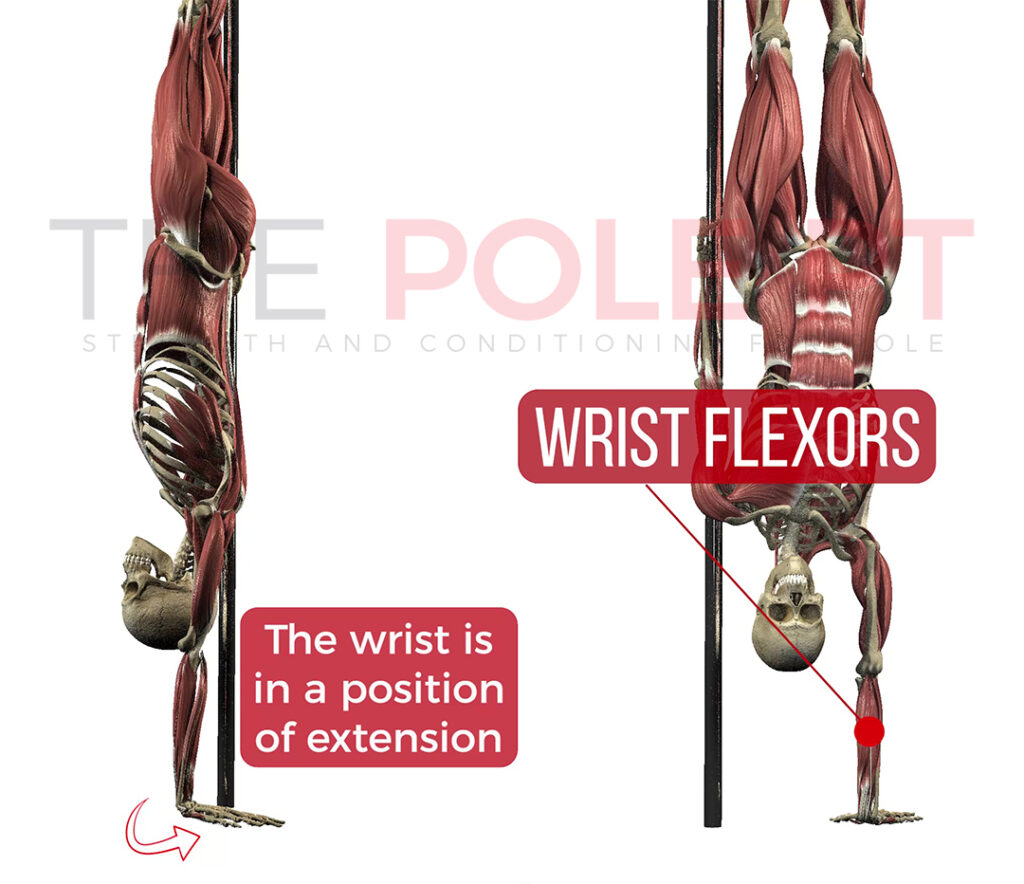
The triceps contract to keep the arm straight. The deltoids bring and hold the arm in the position of shoulder flexion while the serratus anterior and trapezius upwardly rotate and stabilize the scapula.
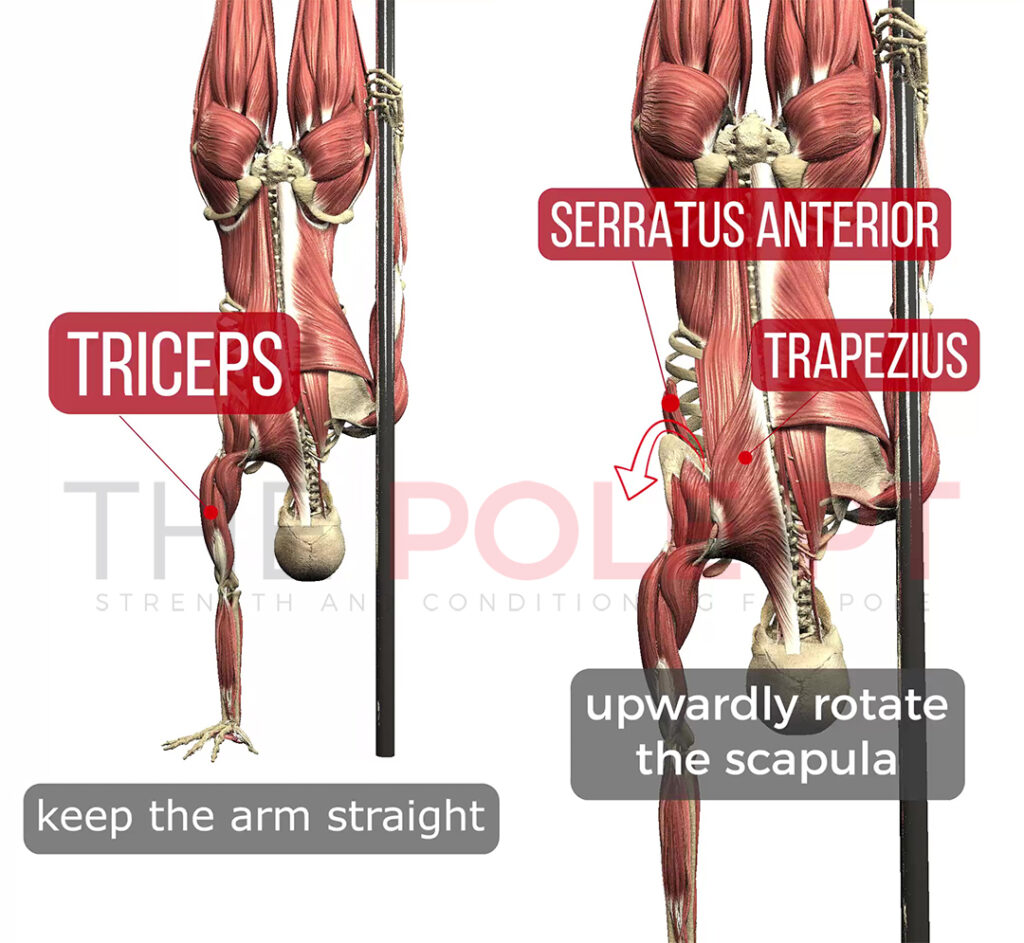
The rotator cuff works to stabilise the shoulder joint. Engagement towards external rotation of the arm is generally what we’re aiming for in this 180 degree overhead position. Side note: If you want to know more about overhead shoulder mechanics, you can check out my more detailed (read: especially nerdy) blog post here!
Note that because the scapula of the bottom arm is upwardly rotated and the scapula of the top arm isn’t, there is a natural asymmetry – a small height difference between the shoulders which provides space for this upward rotation.
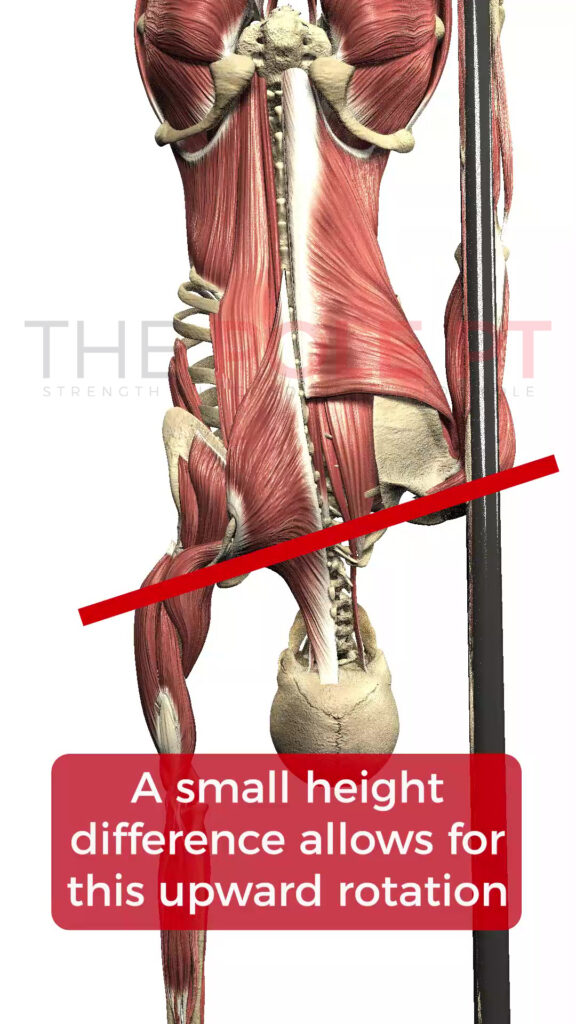
Pole handstand anatomy: The top arm
Because variety is the spice of pole life, the pole handstand can be performed in a number of different grips and positions. The version we’re using in this demo is often called a ‘twisted grip’ handstand, which can be a little confusing.
To enter the handstand from the floor, the top arm starts behind the torso in a position of shoulder extension and internal rotation. It’s that internal rotation which gives the move its ‘twisted grip’ moniker, but in the final handstand position, the inside arm actually ends up in a ‘fairly’ neutral position by the side of the body.
The shoulder adductors, primarily the pectoralis major, latissimus dorsi, teres major and coracobrachialis contract to help hold the torso close to the pole.
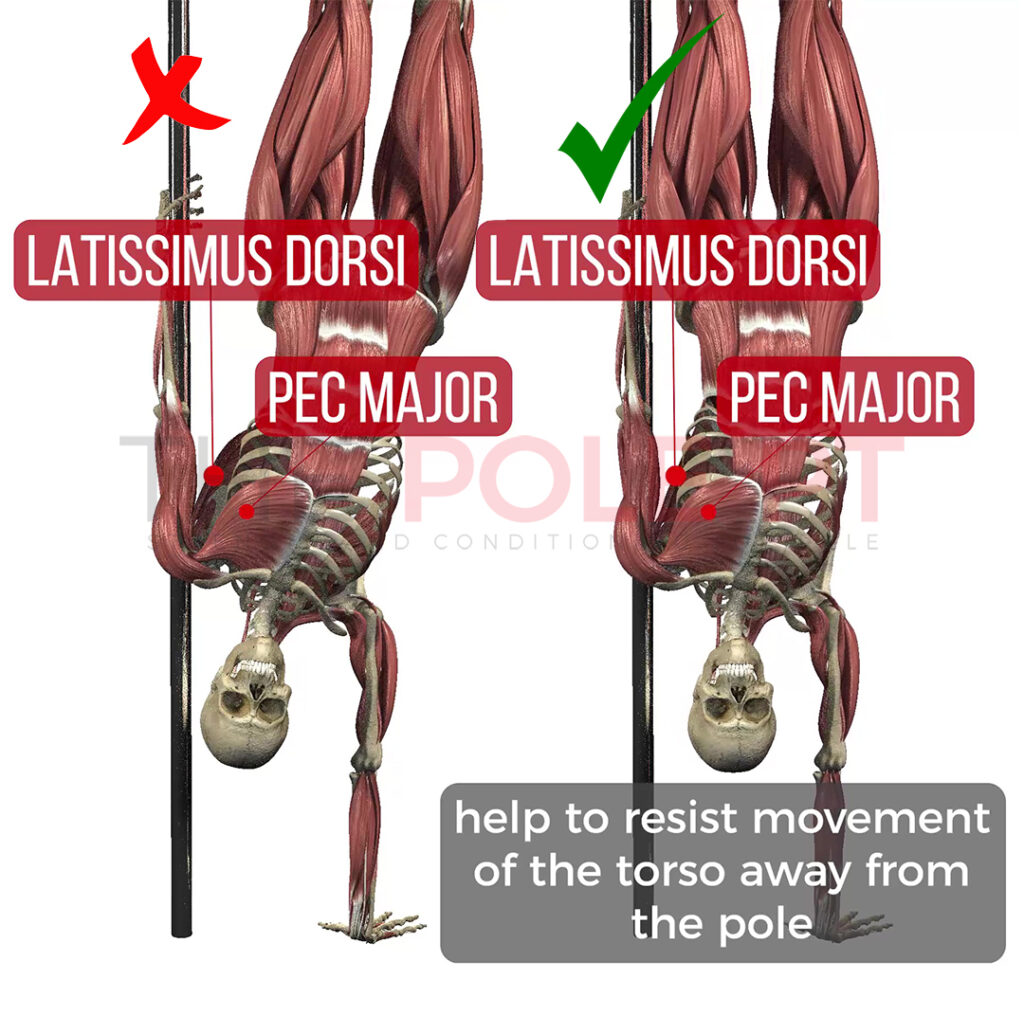
The deltoid also contracts to help resist movement in the sagittal plane.
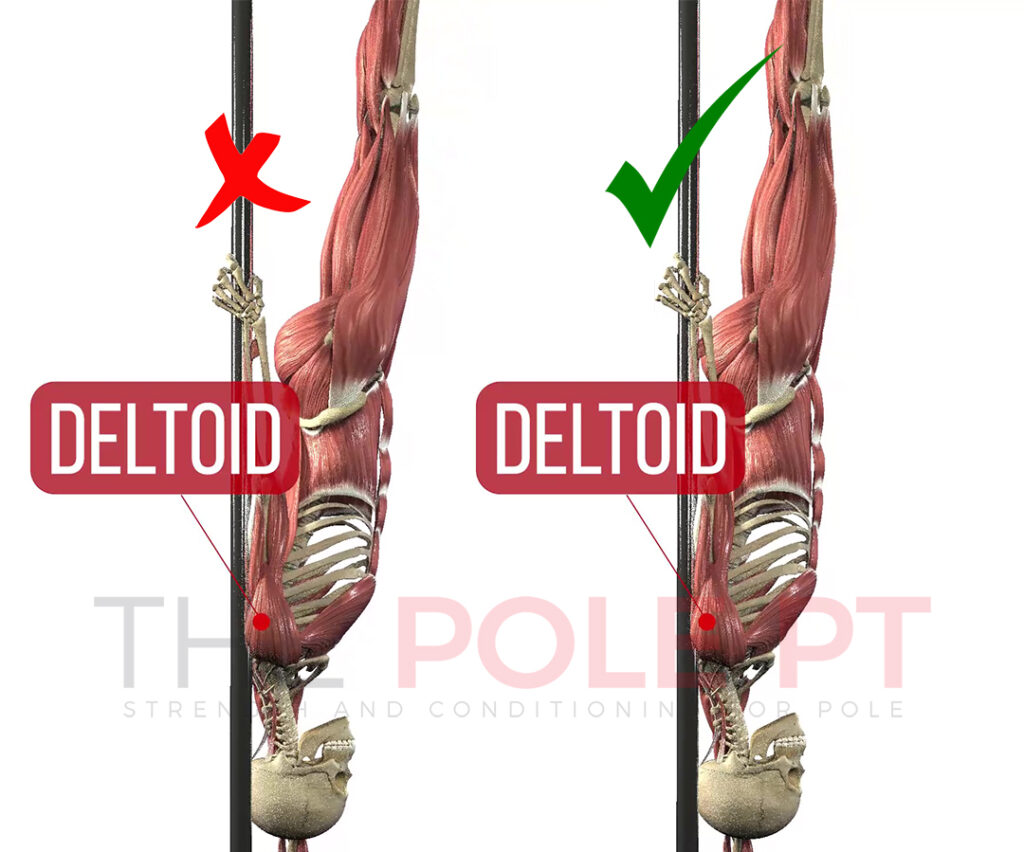
Pole handstand anatomy: The torso
The entire core musculature works to stabilse the torso and pelvis in the air. In particular the obliques, erector spinae and transverse abdominis.
Note that if the top hand is placed too high on the pole, there are some knock-on effects. It will create an increased height difference between the shoulders which can create additional instability and make it more challenging to balance. It will also require an increased side bend (lateral spinal flexion) in order to stack the pelvis over the shoulders – an extra challenge for the lateral spinal flexors, in particular the obliques and quadratus lumborum!
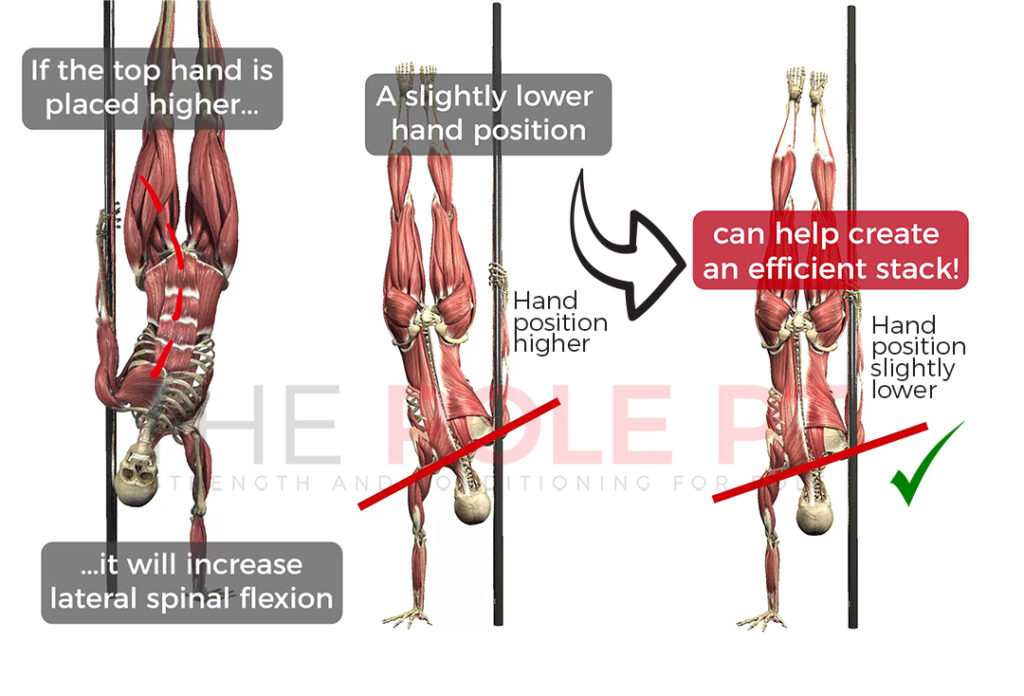
If the height difference between the shoulders is just enough to allow for the upward rotation of the bottom scapula, but not so much that it causes a dramatic imbalance, it should allow more efficient and therefore ‘easier’ stacking.
Your own positioning ‘sweet spot’ will depend on many factors, not just your own strengths and individual body mechanics, but also any aesthetic goals and how you are planning to transition in and out of the handstand position, if it’s part of a combo. But if you’re working on this trick and still struggling to land it, head on over to Part 2 when you’re done here – we’ll explore some pointers for setting up your pole handstand for success!
Pole handstand anatomy: The legs
While upper body strength and core stability are its dominating factors, it’s tricky to find balance in the handstand if our legs are not also engaged purposefully.
The engagement here very much depends what position we are holding our legs in – and remember that constant balance of opposing muscles is still at play – but if we’re trying to pick ‘favourites’, I’d say the quads are working hard to keep the legs straight, the hip adductors to keep the legs together and the glutes to keep the legs stacked above the torso.
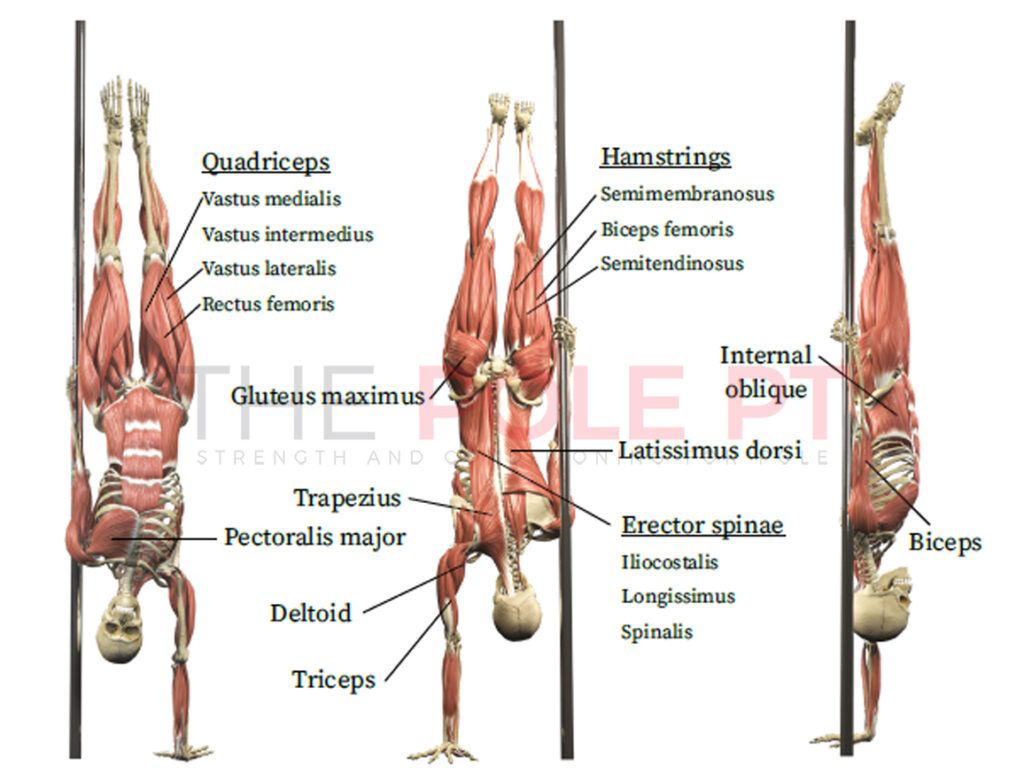
Well, that’s it for the nerdy bit! Phew!
Want to apply some of this theory to your handstand practice? Join me in Part 2 for my Top 3 Tips to Set your Pole Handstand Up for Success!
References
A couple of interesting handstand reference studies, if you want to dive into this topic a little more:
Kochanowicz, Andrzej; Niespodziński, Bartłomiej; Mieszkowski, Jan; Marina, Michel; Kochanowicz, Kazimierz; Zasada, Mariusz. Changes in the Muscle Activity of Gymnasts During a Handstand on Various Apparatus. Journal of Strength and Conditioning Research: June 2019 – Volume 33 – Issue 6 – p 1609-1618
doi: 10.1519/JSC.0000000000002124
Hedbávný, Petr; Sklenaříková, J; Hupka, D; Kalichová, Miriam; Balancing in handstand on the floor. Science of Gymnastics Journal December 2013 – 5(3):69-79


